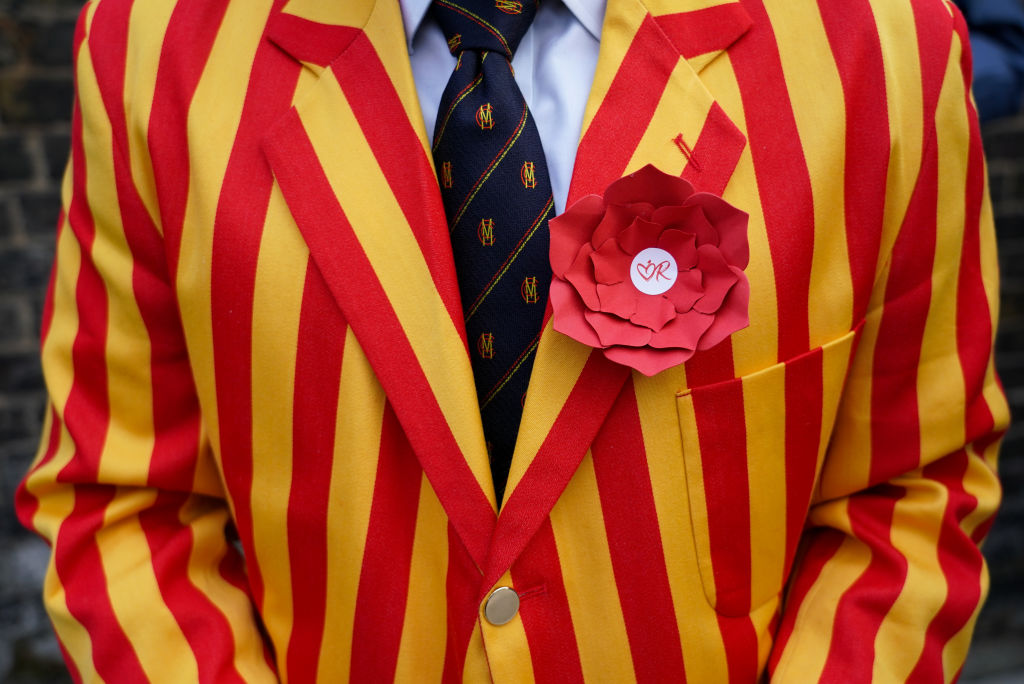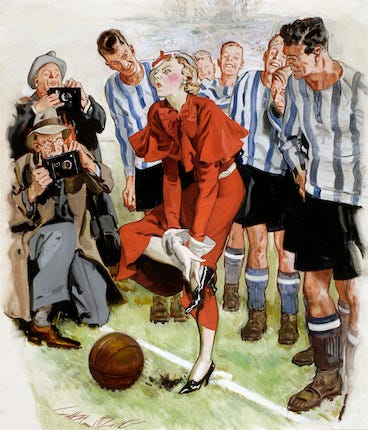Ed Warner: The MCC, the Hundred and a £100m question

Cricket has an image problem. Is it fit for today’s society, one that is hyperconscious about its own diversity?
The Marylebone Cricket Club, members resplendent in their egg and bacon colourway, is emblematic of the sport’s issue. A 30-year waiting list to join the club is one measure of the challenge. Now contemplate giving the MCC’s 18,000 members a £100m-plus windfall.
Sport is a notoriously leaky industry, especially when deeply divisive issues are under discussion. And in cricket nothing is more divisive than the Hundred, the short-form tournament created by the ECB as the centrepiece of the English summer.
Its future splits opinion among the 18 first class counties, essentially between those owning host grounds and those on the outside looking in. There are eight teams in the Hundred, but only seven county hosts. The eighth? The MCC, owner of Lord’s.
Last week reports emerged indicating that the Hundred would in time likely become a two-tier competition involving 18 or 19 teams. Crucially, too, that outside investment into the team franchises would be permitted.
Whatever the source, this seems engineered to buy off opposition from the ‘have nots’, who hold the whip hand in a restructuring as 14 votes are needed for any changes to be approved.
Why possibly 19 teams? Well, Lord’s would clearly be a plum target for any Indian, Saudi or US private equity money lured by the prospect of this quirky competition becoming a must-watch for the cricket lovers of the Indian subcontinent and beyond.
Why would the MCC simply leave this valuable asset with the ECB, or donate it to Middlesex, the impoverished county that plays most of its games at Lord’s but has no share of the lucrative international matches at the ground?
Consultants at Deloitte are said to have valued the franchise based at the Oval, London’s other county ground, at close to £100m.
In the crazy world of franchise valuation, this is either a ridiculous finger-in-the-air guesstimate, or a massive bargain. Take your pick. If that’s the Oval, what price Lord’s? A substantial cut above, I’d wager.
Some of the leaks indicate that the ECB, current controller of all eight franchises in the Hundred, intends to retain 50 per cent ownership of each.
If true, this would be part control freakery, part a means of further redistributing revenue to the more impoverished counties (they currently receive £1.3m a year as a stipend from the Hundred), and part simple lack of trust in its member counties to use any extra cash wisely.
The MCC exists primarily to enjoy the benefits of ownership of Lord’s and to act as ultimate global custodian of the rules of the game.
It used to be responsible for England teams that toured abroad, and still fields men’s and women’s sides today. It has shown little interest in solving the deep-seated problems at Middlesex, though, still less taking outright control of the county’s cricket.
One might guess that the MCC’s members aren’t overly enamoured with the Hundred as a competition format, but could they contain themselves in the face of a possible influx of outside cash?
The MCC has been the subject of public scorn in recent times, from members blocking a proposal to stop hosting the annual Eton v Harrow fixture to the haranguing of Aussie cricketers in the hallowed Lord’s Long Room at the Ashes this summer. The club’s perceived elitism makes it an obvious target.
The sale of a franchise based at Lord’s could raise a sum sufficient to shore up a number of ailing counties, to extend the work of the ECB and the MCC’s own foundation in promoting cricket in state schools in deprived areas of the country, and still leave ample money to install a plexiglas screen in the Long Room to protect visiting players.
If a team does take the field in the Hundred in 2025 dressed in egg and bacon kit, we’ll soon see just how socially aware 18,000 MCC members can be.
Caricature and characters
Suranne Jones trumped Mary Earps in my living room on Tuesday. Thanks to the BBC dropping all episodes of Vigil early onto iPlayer I didn’t have to sit through a cloying Sports Personality of the Year while waiting to see the climax of the broadcaster’s latest must-see drama.
No reflection on Earps or Stuart Broad – who would have had my vote could I be bothered – as both certainly tick the personality box, but SPOTY has moved beyond parody in recent years.
I thought of the England goalkeeper and just how far women’s football has come when at a Bonhams auction of football art last week.

Check out Lot 27, the cartoon above. ‘Her first and last kick’ is undated. Its artist George Wilkinson died in 1965. Sale price (including premium) was £2,560. I hope a champion of the women’s game bought it for an ironic hanging in their downstairs loo.
I did manage at the auction to bag a 1983 painting of a match at Selhurst Park, titled ‘Crystal Palace and Oxford United’. That was one of Palace’s many dismal years. Mystery is that these two teams didn’t play each other between 1977 and 1985…
Nutty numbers
The Mayor of London’s chosen consultants claim that the two Major League Baseball matches at the London Stadium this year generated a £53m boost for the city’s economy. At what cost? And such a tiny drop anyway in the economic ocean of such an enormous city. Has any such study of any event ever shown an impact too small to justify the hosting cost? I’ve not seen one.
Private equity firm Arctos has bought up to 12.5 per cent of Paris Saint-Germain, valuing the French football champions at €4.3bn. Puts Sir Jim Ratcliffe’s £1.25bn for 25 per cent of Manchester United into context. Both are admittedly trifling valuations by US franchise standards, but still hard to generate an economic return at those prices, especially from minority stakes with limited boardroom leverage.
Thirty managers sacked in the Premier League and EFL so far this season, Steve Cooper and Matt Gray rounding up the total this week. That’s the same tally as at this point last year. Now through to the end of January, coinciding as it does with the transfer window, is always a bumper time for dugout turnover. Last season’s total was 74. It’s Christmas crackers (and I hope, Dear Reader, you have a good one yourself!).
Ed Warner is chair of GB Wheelchair Rugby and writes his sport column at sportinc.substack.com
